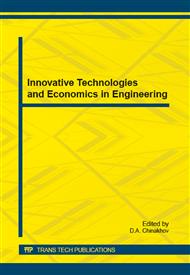p.282
p.288
p.294
p.298
p.304
p.313
p.319
p.324
p.327
Process Chip Formation with a Single Conditional Shear Surface
Abstract:
Most research on chip formation is based on free cutting with a single shear plane (the approach proposed by I.A. Time). No account is taken of the two-dimensional blade geometry nor of the three-dimensional character of the deformation source in the cut layer. It is assumed that the transformation of the cut layer into chip is confined to a very narrow zone adjacent to the shear plane. By contrast, constrained cutting is characterized by a conditional threedimensional shear surface, which is analogous to the shear plane.
Info:
Periodical:
Pages:
304-312
Citation:
Online since:
October 2014
Authors:
Keywords:
Price:
Сopyright:
© 2014 Trans Tech Publications Ltd. All Rights Reserved
Share:
Citation:


